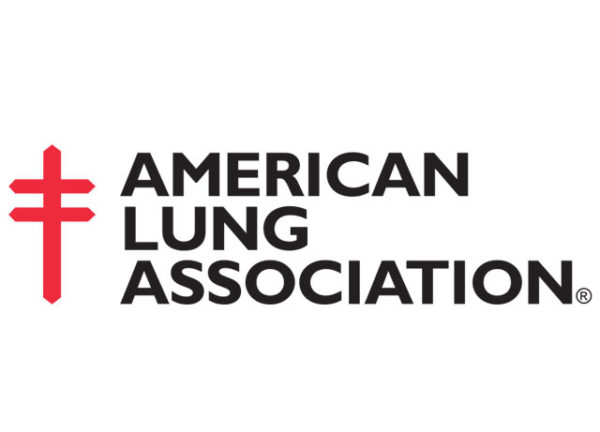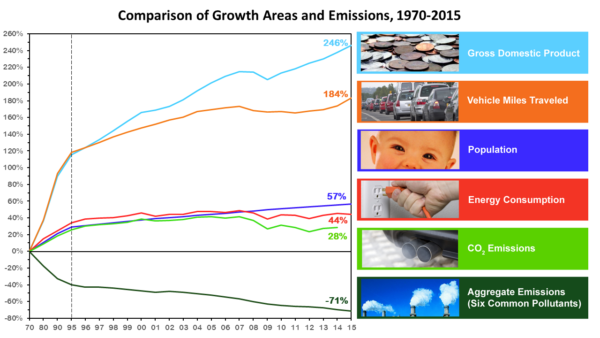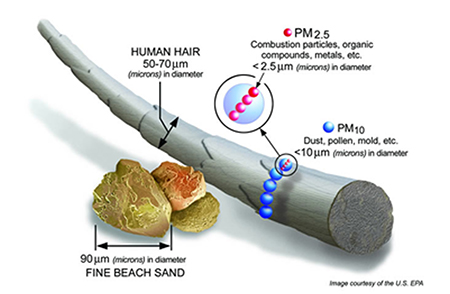The American Lung Association released its Annual “State of the Air” report. We’re covering the key points so you can learn more about your air quality.

Every year, The American Lung Association releases a report on the nation’s air quality, appropriately named “State of the Air.” The report uses data from air quality monitors around the country to determine air pollution levels, risk factors, city rankings, and more.
Venta appreciates the work and research that the American Lung Associate puts into this annual report, which is incredibly extensive in its information and findings. The goal is to inform and educate people on the air they breathe and how they can improve it.
Key Points
Overall, the report showed that air quality has improved across the nation, and efforts to curb air pollution have generally been successful. Improvements to make power plants, vehicles, and mass transit systems cleaner have contributed to these positive trends over the years. From government legislation and initiatives from activist groups, improvements have been made in making our air cleaner, and in turn, helping to reduce the risk of premature deaths, cancer, and other health risks.
In fact, based on the report’s findings, it’s clear that legislation such as the Clean Air Act, rounding out fifty years in action, has proven to be successful in curbing air pollution to lower levels.

As you can see from the graph, thanks to the Clean Air Act, air pollution emissions have continued to drop while economic levels rise.
Still, there are too many populations of Americans living in places with poor air quality levels:
“Nearly 4 in 10 people (38.9 percent) in the United States live in counties that have unhealthful levels of either ozone or particle pollution. More than 125 million Americans live in 204 counties where they are exposed to unhealthful levels of air pollution in the form of either ozone or short-term or year-round levels of particles.”
There are many factors that determine how to measure the air quality and air pollution levels for any given region of the country. Region/geography, time of year, and industry/vehicle presence and density can all contribute to air pollution levels.
But it is no doubt that a changing climate greatly affects the state of the air. Warm temperatures generally increase air pollution’s hazards, as ozone is more prevalent during high heat days, especially in urban environments. It’s important that the nation takes measures to reduce emissions that contribute to a warming climate.
City Rankings

By measuring ozone and air pollution data from 2013-2015, the “State of the Air” report ranks metropolitan areas based on their healthy and unhealthy air quality. Taking into consideration the annual averages and 24 hour time frames used to monitor air pollution, these rankings reveal which cities in the US can be considered the cleanest and most polluted cities. Did your city make any of their lists?
Top 10 Cleanest US Cities for Year-Round Particle Pollution
1.) Cheyenne, WY
2.) Farmington, NM
3.) Kahului-Wailuku-Lahaina, HI
4.) Bismarck, ND
5.) Urban Honolulu, HI
6.) Palm Bay-Melbourne-Titusville, FL
7.) Colorado Springs, CO
8.) Elmira-Corning, NY
9.) Pueblo-Canon City, CO
10.) Cape Coral-Fort Meyers-Naples, FL
Head over to the official “State of the Air” website for a full list of all cities that fall into the category of “cleanest.”
Most Polluted US Cities
No matter what metric you’re using to evaluate the state of the air in the US, it’s clear across the board that California has some of the worst air quality in the country.
The top four spots for each category (Ozone, Year-Round Particle Pollution, and Short-Term Particle Pollution) are occupied by California cities. Bakersfield, Visalia-Porterville-Hanford, and Fresno-Madera all landed in the top four of these three categories. All three cities are located in the Central Valley area of southern California and can attribute geography to their poor air quality:
“Surrounded on three sides by mountain ranges, the Central Valley acts as a pool for pollutants produced by the region’s roughly 3.5 million residents, its industry and its large agricultural community. These emissions get trapped in the valley by an inversion layer of warm air.
In addition to the Valley’s unique geographic and meteorological conditions, it’s also a growing population center. Fresno County, the most populous in the region, grew by 16 percent between 2000 and 2010, and now houses more than 930,000 people. More people, and more cars.
These mobile sources of emissions add to the Valley’s problems, but Holt argues they’re not the main cause. The region’s agriculture is responsible for much of the region’s pollution. Up until a few years ago, farmers in the region would regularly burn brush and cuttings at the end of the season, creating huge sources of particulate matter in the air. A new state law, enforced since 2004, regulates the emissions of the agriculture industry in the state, and Holt says the Valley’s pollution problems have already started to decline.”
For a full list of the most polluted cities evaluated in the report, head over to the official website.
Knowing Your Health Risk

One of the best outcomes of this annual report is its ability to educate Americans about air quality, ozone, and particle pollution and how it affects your health and well-being.
What is Ozone?
Often referred to as smog, ozone is an invisible gas developed from the gases that come from sources of high-heat combustion like vehicle tailpipes, smokestacks, and power plants. When these gases mix with sunlight at the ground level, they react and become smog or ozone air pollution.
While ozone gases are found in the upper atmosphere, at ground level, ozone pollution is harmful to your health. Studies have shown that exposure to ozone pollution over time can contribute to premature death, and immediate severe breathing problems are not uncommon after short-term exposure.
Particle Pollution
Particle pollution is extremely harmful and dangerous, increasing the risk of heart disease, lung cancer, asthma attacks, and more.
Particle pollution varies in size and is often broken up into two categories: PM 10-2.5 and PM 2.5. Coarser particles that are between 10 and 2.5 microns fall in the former category, while PM 2.5 contains finer particles 2.5 microns and smaller.

Particle pollution like PM 2.5 and ultra-fine particles are a significant health risk because they are small enough to pass through lung tissue and enter the bloodstream. These particles are composed of many different compounds, variance depending on factors like region and time of year.
Particle pollution diminishes lung function and some health side effects can be intense coughing, increased asthma attacks, and allergic reactions, cardiac arrhythmias, heart attacks, and cancer.
Plenty of research and studies have been conducted over the years that can back up the statements in the report that short-term increases and exposure to particle pollution have been linked to negative consequences such as death, respiratory and cardiovascular causes, strokes, increased mortality in infants, and young children, increased amount of heart attacks, inflammation of lung tissue in young, healthy adults and increased hospitalization for asthma sufferers.
Anyone exposed to particle pollution is at risk for negative health effects. People who are most at risk are sensitive groups like those who already have a respiratory condition like COPD or asthma, those who work outside, the elderly, and children. People who are diabetic have an increased risk because they have a higher risk of cardiovascular disease.
Improving the Air You Breathe

Air quality affects everyone in this country, from rural populations to city dwellers. The “State of the Air” report is an annual reminder of how much air quality contributes to your overall health and well-being.
While the report concludes that air quality has generally improved and air pollution has decreased, there are still millions of Americans who are exposed to unhealthy air pollution. It is important to be aware of air quality, how it affects you and what you can do to help improve the air you breathe.
This doesn’t have to be a daunting task, simple changes to your daily habits and routines like taking public transportation, biking, or walking instead of driving can be the beginning to making a larger difference. Getting involved with local, state, and the federal government is important as well and there are many organizations you can join that work on clean air initiatives.
How are you helping to improve the air quality where you live? Have you read a “State of the Air” report before? Let us know!

